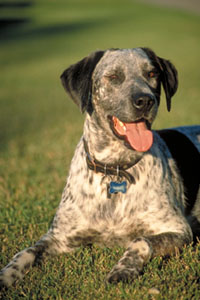
Being an animal behaviorist for dogs and cats, I have seen “higher-quality” pet foods I had recommended fizzle in quality while increasing in price (I’ve noted this trend too doing my own personal grocery shopping). I usually get asked pet foods and products I recommend. At this point, none seem to come to mind. I myself have gone to feeding animals more ‘human-grade’ food or what is often called “people” food. Pet food was manufactured so companies could make money off of the slop and wastes from slaughterhouses.
Virtually all of the ‘higher quality’ or better pet foods have been bought out. Many by multinationals such as Colgate-Palmolive and Proctor & Gamble. Puppies universally never want to eat Iams, Eukanuba, and Science Diet. Many foods promoted as ‘allergy-free’ are loaded with cornmeal and corn gluten (allergens for many animals). Cornmeal is a notorious culprit in many skin ailments—itching, mysterious infections, and sores that are traditionally treated with steroids. Many white dogs are especially sensitive to skin problems. Steroids, of course, rarely relieve the problems long term, and in the case of mysterious skin issues, itchiness, and licking between the toes, often not at all. And although high-protein, grain free dog foods are popular, they are not necessarily great alternatives. Many dogs who are fed ‘grain free’ dry dog foods eat grass like it’s going out of style. Grass is actually very nutritious. These dogs who are craving it are not getting enough roughage or fiber in the food from quality cellulose (found in plants).

The ridiculous numbers of pet deaths and on-going pet food recalls that never seem to end speaks for itself. Pet food is the bottom of the barrel of unmentionables and disgusting, cheap fillers. Instead of simply suggesting that clients avoid packaged pet food and treats that contain artificial colors and flavors, as well as animal “digest”, “rendered” animal products, by-products, corn meal and corn gluten, I recommend they skip most packaged and processed pet food altogether. This is much easier to do for dogs than for cats who have very specific nutritional requirements.
The terrible ingredients that go into pet food and animal feed has been an issue for decades. When I was about nine or ten years old, I was given the book Natural Health for Dogs & Cats by Dr. Pitcairn (I read every page). I don’t think we would live a healthy life on fortified corn flakes mixed with some waste products and moldy fillers. So why do we expect other animals can?
What do I suggest now?
There are many homemade recipes you can prepare for your dog and kitty, including recipes for those dogs and cats who suffer from unknown allergies. Not Fit for A Dog: The Truth about Manufactured Dog and Cat Food, by Dr. Michael Fox is a good book to learn about what goes into pet food (Dr. Fox, an animal advocate and veterinarian, gave a very nice testimonial for my book, Training Your Dog the Humane Way). Dr. Pitcairn’s book also has a number of recipes.
My clients have trained with peaches, apples, bananas, carrots, cashews, sweet potatoes, and carob and molasses treats. I have a little arsenal of kitty treat recommendations for my kitty clients. One of my clients baked carob and molasses “fudge” brownies and pumpkin bread for her deaf Great Dane’s training sessions. Some of my clients have bought dehydrators to make their own dehydrated dog snacks. It’s not only cheaper that way, but they don’t have to worry about a recall.
Many of my clients have been more than happy to steer away from heavily processed pet foods and switch to more holistic, healthy food for their dogs and cats. Often the changes are immediate, such as healthier and glossier coats, less itchiness, and more relaxed temperaments.
Alana Stevenson can be reached through her website AlanaStevenson.com.
